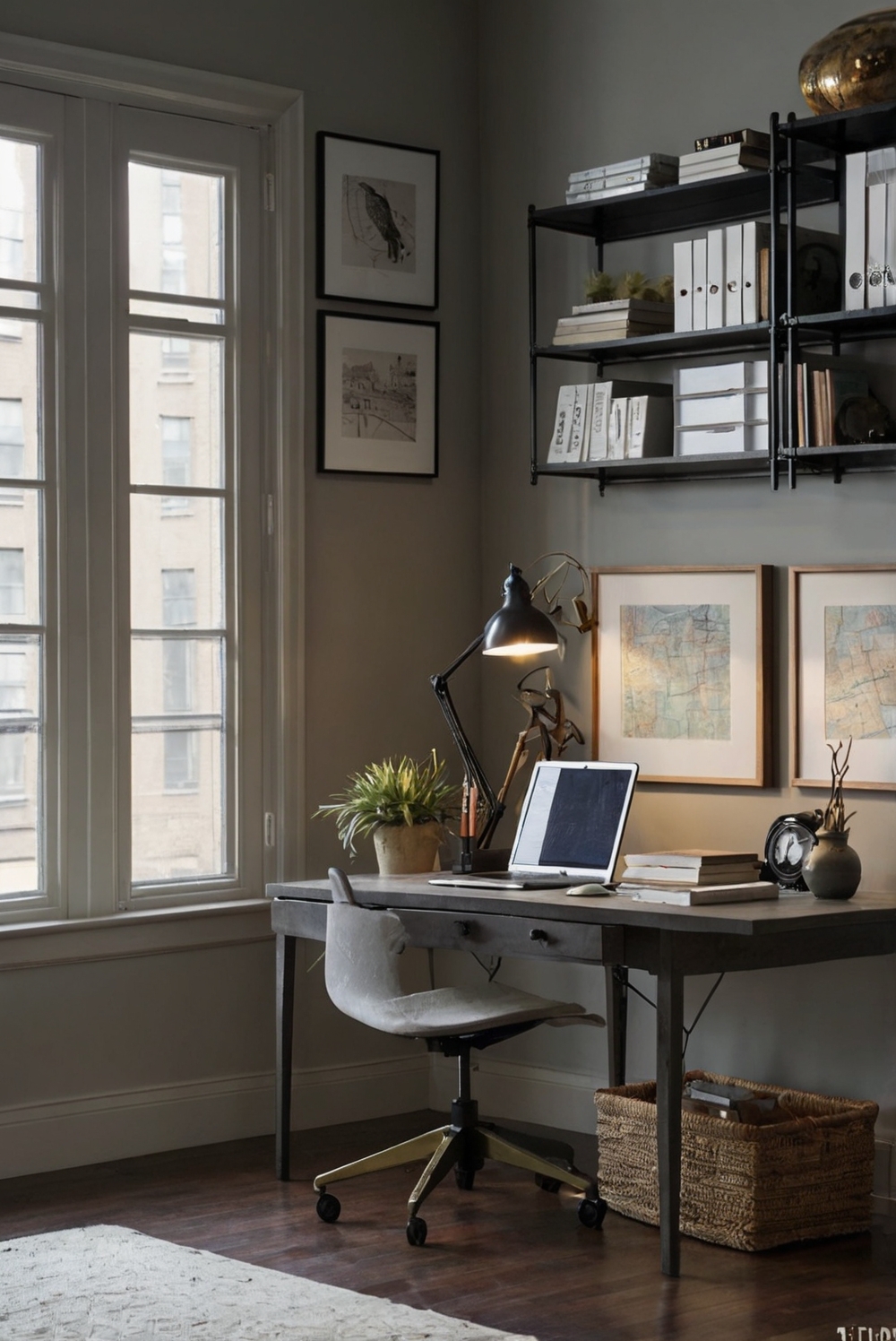How to choose the right desk chair for back support?
Unveil the key to ergonomic excellence with this essential guide on selecting the ideal desk chair for optimal back support in your daily interior designer routine.
How to choose the right desk chair for back support?
16px font size bold: Focus on ergonomics when selecting a desk chair for back support in your home office. Look for chairs with adjustable lumbar support, seat height, and armrests. Make sure the chair has proper cushioning and allows you to sit with your feet flat on the floor and knees at a 90-degree angle. Avoid chairs that are too soft or rigid, as they can cause discomfort. Regularly adjust your chair to maintain proper posture.
Ensure your chair complements the aesthetics of your home decorating theme and offers functionality for your specific needs. Consider investing in ergonomic chairs designed for long hours of sitting and comfort.
When choosing a desk chair, it is essential to prioritize your health and well-being by opting for quality seating that supports your back and overall posture.
Importance of Choosing the Right Desk Chair for Back Support
Choosing the right desk chair with proper back support is crucial for maintaining good posture, preventing back pain, and promoting overall health. Sitting for long hours in an unsupportive chair can lead to discomfort, muscle strain, and even long-term back problems. A chair with adequate lumbar support can help align your spine correctly, reduce pressure on your lower back, and prevent slouching.
Key Features to Look for in a Desk Chair for Back Support
When selecting a desk chair for back support, consider the following key features:
- Ergonomic design: Look for a chair that supports the natural curve of your spine.
- Lumbar support: Choose a chair with adjustable lumbar support to fit your lower back curve.
- Adjustable seat height: Ensure the chair allows you to adjust the seat height for proper alignment.
- Seat depth and width: Select a chair with appropriate seat depth and width to support your body comfortably.
- Armrests: Opt for a chair with adjustable armrests to reduce strain on your shoulders and neck.
Choosing the Right Desk Chair Based on Your Needs
Consider your specific needs when choosing a desk chair for back support:
- If you have existing back pain, prioritize a chair with excellent lumbar support and cushioning.
- For taller individuals, look for a chair with a high backrest to support the entire spine.
- If you sit for extended periods, choose a chair with breathable fabric to prevent sweating and discomfort.
- Consider your workspace setup and desk height to ensure the chair fits properly and promotes good posture.
Tips for Maintaining Good Posture While Sitting
In addition to choosing the right desk chair, follow these tips to maintain good posture while sitting:
- Keep your feet flat on the floor and your knees at a 90-degree angle.
- Sit back in your chair with your back against the lumbar support.
- Avoid slouching or leaning forward for extended periods.
- Take breaks to stand, stretch, and walk around periodically.
Conclusion
Choosing the right desk chair for back support is essential for preventing back pain, promoting good posture, and enhancing productivity. By focusing on key features like ergonomic design, lumbar support, and adjustability, you can find a chair that meets your specific needs and supports your spine effectively. Remember to maintain good posture while sitting and take breaks to move and stretch throughout the day to keep your back healthy and pain-free.
1. What features should I look for in a desk chair for back support?
When choosing a desk chair for back support, consider features such as adjustable lumbar support, proper seat depth and width, adjustable armrests, and a recline function. These features are essential for maintaining good posture and reducing strain on your back. Look for chairs with padded seat cushions and breathable fabric to ensure comfort during long hours of sitting. Additionally, ergonomic design and sturdy construction are key factors to consider when selecting a chair that promotes good back support.
Studies have shown that ergonomic chairs with adjustable lumbar support can significantly reduce lower back pain and improve overall comfort and productivity in the workplace. Prioritize chairs that offer customizable features to suit your unique body shape and sitting preferences.
In summary, choosing a desk chair with adjustable lumbar support, proper seat dimensions, adjustable armrests, and a recline function can help you maintain good posture and reduce back strain. Selecting a chair with ergonomic design and durable construction will ensure long-term comfort and support for your back.
Sources:
– https://www.ncbi.nlm.nih.gov/pmc/articles/PMC5734172/
– https://www.ergonomicofficefurnitures.com/best-ergonomic-office-chairs-for-back-pain/
2. How can I test a desk chair for back support before purchasing?
Testing a desk chair for back support before purchasing is essential to ensure that it meets your specific needs and provides adequate comfort. When trying out a chair, pay attention to the lumbar support by sitting back and feeling if the chair provides proper support to your lower back. Check if the seat depth allows you to sit comfortably with your back against the backrest and your feet flat on the floor.
Additionally, test the adjustability of the chair by experimenting with the height, armrests, and recline function to see if you can customize the chair to fit your body properly. It’s also important to assess the overall comfort of the chair by sitting in it for an extended period to determine if it maintains your posture and reduces strain on your back.
By thoroughly testing a desk chair for back support before purchasing, you can ensure that it meets your ergonomic needs and provides the necessary comfort and support for long hours of sitting.
3. Are there specific desk chair brands known for their back support features?
Several desk chair brands are renowned for their back support features and ergonomic design. Brands such as Herman Miller, Steelcase, Humanscale, and Autonomous are known for producing high-quality chairs that prioritize back support and comfort. These brands offer a range of ergonomic chairs with adjustable lumbar support, customizable features, and durable construction to promote good posture and reduce back strain.
Herman Miller’s Aeron chair, Steelcase’s Leap chair, Humanscale’s Freedom chair, and Autonomous’ ErgoChair 2 are popular choices among users seeking superior back support in their desk chairs. These brands have established a reputation for providing ergonomic solutions that cater to various body types and sitting preferences.
When considering desk chair brands for back support features, it’s advisable to research customer reviews, ergonomic certifications, and product specifications to ensure that the chair meets your specific needs and provides the necessary support for your back.
4. What are some additional tips for maintaining good back health while using a desk chair?
In addition to choosing the right desk chair for back support, there are several tips for maintaining good back health while using a chair. Firstly, it’s important to take regular breaks from sitting to stretch and move around to alleviate pressure on your back. Incorporating ergonomic accessories such as a footrest, keyboard tray, or monitor stand can help improve your posture and reduce strain on your back.
Furthermore, practicing proper sitting posture by keeping your feet flat on the floor, maintaining a neutral spine alignment, and adjusting your chair to support your lower back can significantly reduce back pain and discomfort. Engaging in regular exercise, such as strengthening core muscles and stretching, can also contribute to better back health and overall well-being.
By combining ergonomic practices, regular breaks, and physical activity, you can promote good back health and minimize the risk of back-related issues while using a desk chair for extended periods.
5. How can I adjust my desk chair for optimal back support?
Adjusting your desk chair for optimal back support is essential to ensure that it promotes good posture and reduces strain on your back. Start by setting the chair height so that your feet are flat on the floor and your knees are at a 90-degree angle. Adjust the seat depth to support your thighs without putting pressure on the back of your knees.
Next, customize the lumbar support to fit the natural curve of your lower back and provide adequate support while sitting. Ensure that the armrests are positioned at a height where your shoulders are relaxed and your arms can rest comfortably without raising your shoulders. Finally, adjust the recline function to allow for a slight backward tilt to reduce pressure on your spine.
Regularly check and readjust your chair settings to maintain optimal back support throughout the day. By properly adjusting your desk chair to promote good posture and provide adequate support, you can reduce the risk of back pain and discomfort associated with prolonged sitting.







